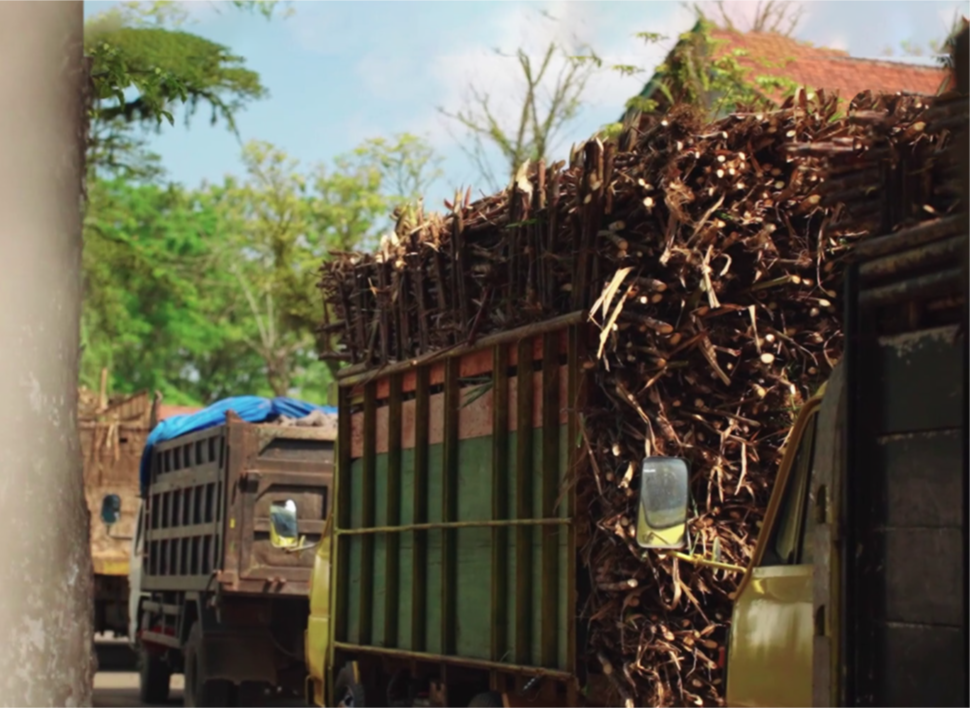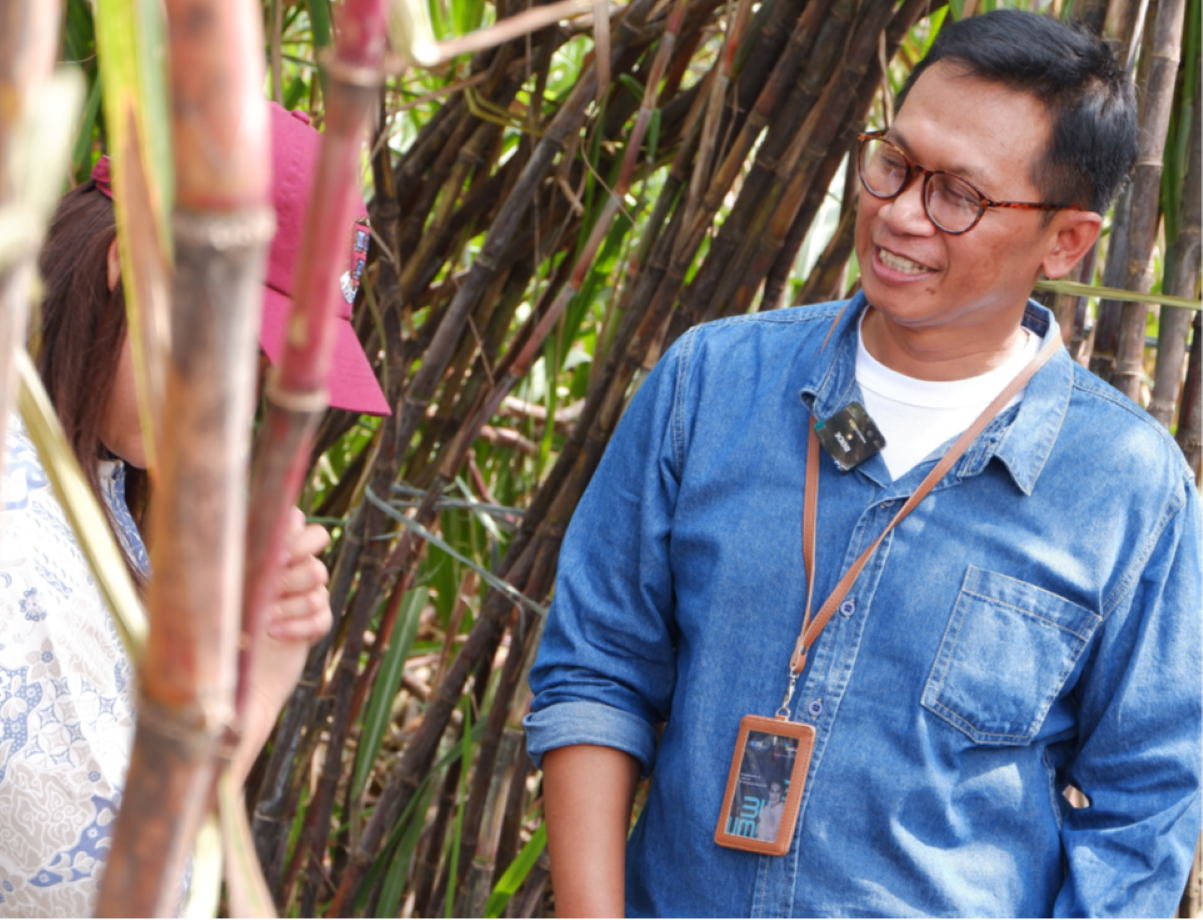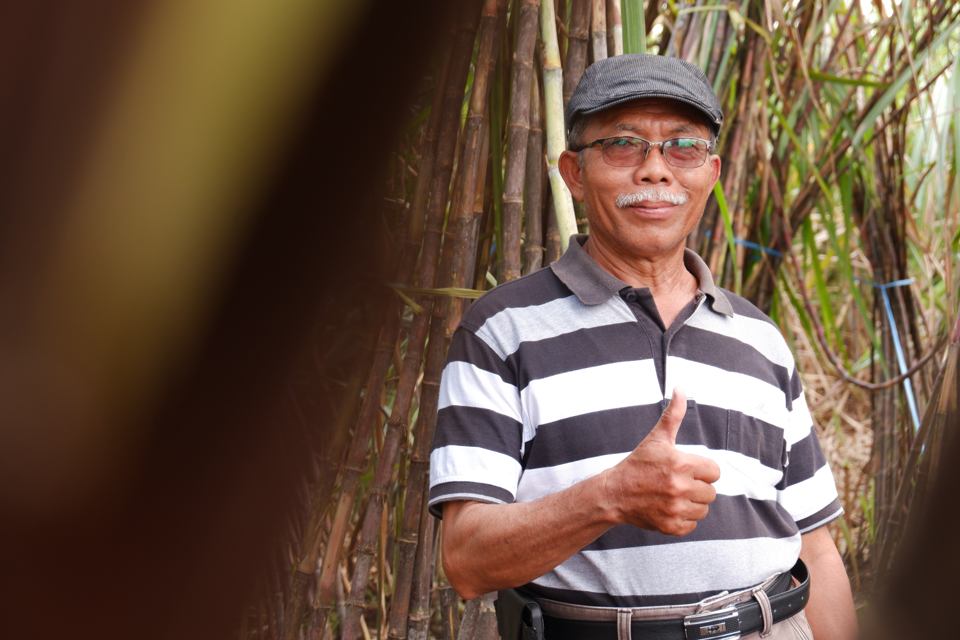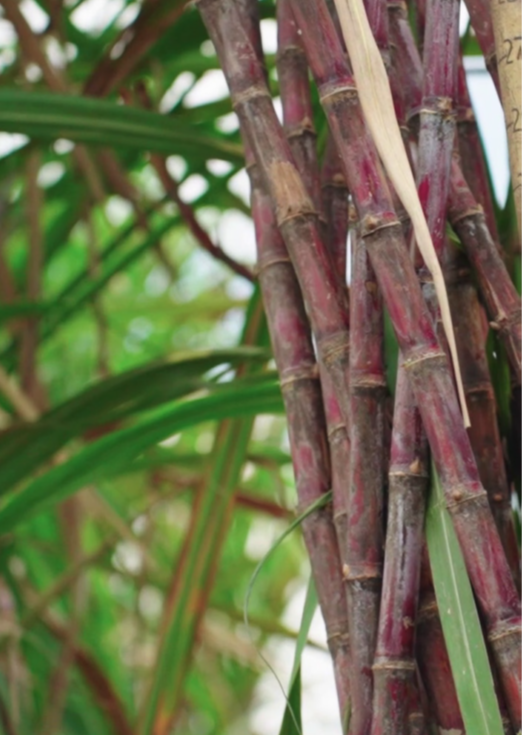A joint project of CropLife Asia, CropLife Indonesia & the Southeast Asian Regional Center for Graduate Study and Research in Agriculture (SEARCA)
Written by: Jerome Cayton C. Barradas, Project Coordinator II, Southeast Asian Regional Center for Graduate Study and Research in Agriculture (SEARCA), 2024

After having travelled by air and land for more than eight hours, I found myself in the quiet district of Jatiroto in the Lumajang Regency of East Java, Indonesia. There, under the bright July sun, is a slow procession of big trucks loaded with sugarcane on their way to the local sugar factory – a sweet story is unfolding. Jatiroto has an area of more than five thousand hectares which is home to more than 50,000 people. It is one of the centers of sugarcane production in the regency and its surrounding areas.
According to a report by the United States Department of Agriculture Foreign Agricultural Service (USDA FAS), East Java accounts for nearly half of the country’s sugarcane production. This is where I meet the cheerful Haji Suwarso, a 67-year-old second generation sugarcane farmer. He used to be a government officer, but he is now a fulltime farmer since 1997.
THE DEMAND FOR SWEETNESS
Sugar has been characterized by the Indonesian Ministry of Trade as an essential food product. Because of this, the government ensures its supply and demand. According to the Organisation for Economic Co-operation and Development (OECD), it is expected that Indonesia is one of the countries in Asia that will experience the largest increase in sugar consumption. With pandemic restrictions being lifted, the growing demand in the food and beverage industry would push the consumption of refined sugar further. This is estimated to reach 7.8 MMT of raw sugar. In addition, driven by population growth, consumption could further reach 7.9 MMT of raw sugar.
Since local production cannot suffice for the local demand, Indonesia imports sugar. From 2017 to 2019, Indonesia along with China (with 4.8 MMT each) were already the leading sugar importers in Asia, a situation that Indonesia is expected to keep in the following decade.
No matter how sweet the byproduct is, producing it is not without challenges. While the government aims sugar self-sufficiency, the industry continues to battle low productivity and quality, production inefficiencies, land use changes, pests, and extreme weather events linked to climate change. It is projected that the dry season will be earlier and drier than usual. This threatens the yield as the dry season shortens the vegetative period, a crucial time for sugarcane to grow longer segments.
A MUCH-NEEDED SUGAR BOOST

This is the situation that Pak Suwarso found himself in when he shifted from rice to sugarcane production. “I was interested in sugarcane because I realized how much Indonesia is importing. I would like to help in achieving sugar self-sufficiency”, he relates.
“Back when I was planting conventional sugarcane, I spent around 35 to 40 million Indonesian Rupiah (IDR) as capital. I can generate a revenue of 50 to 55 million IDR. When I shifted to genetically modified (GM) sugarcane, using the same resources, I can have 65 million IDR – that is an added 10 million IDR”, Pak Suwarso continues.
GM drought-resistant sugarcane can produce up to 30 percent more sugar than conventional varieties. It has the betaine gene that was developed by PT Perkebunan Nusantara XI (PTPN XI), a state-owned company specializing in sugar and sugarcane commodities, Jember University, and Ajinomoto Company. It is the first commercialized locally developed GM crop in the country.

“PTPN XI is committed to improving sugar productivity through the development of new varieties with desired characteristics and advantages”, Ris Budiyanto, Head of the PTPN XI Plant Section, says. “Due to global warming affecting water availability, we needed crops that have high tolerance to water shortages, so we developed the NXI 4T variety”, he continues. Shifting in land use, especially for sugarcane, has been observed in Indonesia. What used to be rice fields is now planted with sugarcane. In addition, hills are also being converted for sugarcane use.
These were some of the factors that sparked the development of drought-tolerant sugarcane. Nanik Tri Ismadi has been working with PTPN XI’s seedling research and development for more than two decades. “It took 13 years since we started our research on biotech sugarcane before it was approved for release in 2013. We need to ensure that it is safe for the environment, food and feed, thus, biosafety certificates must be obtained.
The plant variety release certificate for NXI 4T was released in 2013. Today, it is estimated to have already been planted in 400 to 500 hectares. “We hope that products of modern biotechnology will be more accepted by sugarcane farmers and the public. Through the adoption of NXI 4T, we hope to be able to increase farm productivity, farmer income, and the availability of sugar for consumption”, Ris Budiyanto adds.
Fundamentally, Indonesian farmers are deeply inclined towards the adoption of genetically modified (GM) sugarcane, not limited to the region of Java alone. As a spokesperson for GM Sugarcane farmers, Mr. Suwarso has also proffered recommendations for enhanced engagement of Indonesian farmers by the government through the provision of additional demonstration plots. “We earnestly hope that the government may extend subsidies to incentivize the cultivation of GM sugarcane among farmers, thereby contributing to the amelioration of our national productivity,” he articulates.
THE SWEET LIFE
Facing a large sugarcane field, I asked Pak Suwarso about life after adopting GM sugarcane.

“Since I do not have extra money then, whenever I have to visit my grandchildren in Surabaya, I would not be able to use the expressway with its toll fees. I can afford it now, and not just that we are able to bring them to places of recreation”, he answered. He also said that he is now able to regularly give donations to less fortunate people. I asked him about what he feels now because of these things. “I am a lot happier now”, he recounts.
Now, isn’t that sweet?


